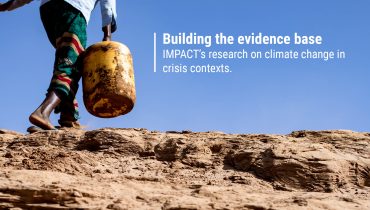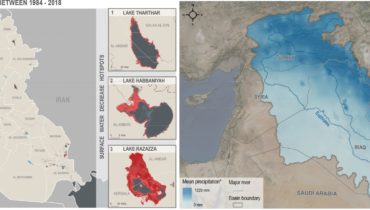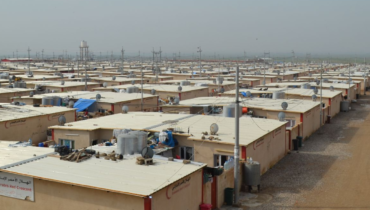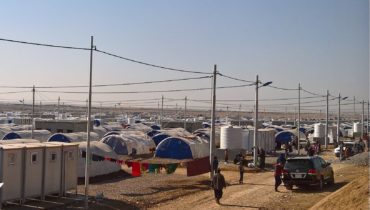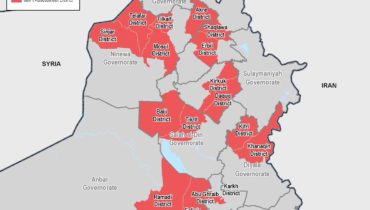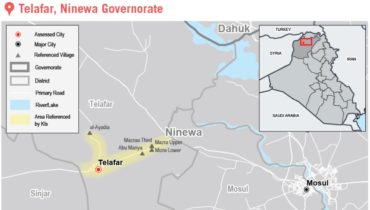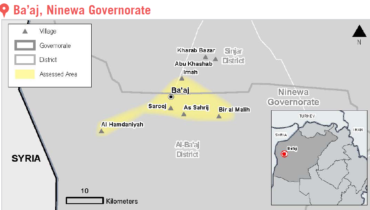Iraq: Understanding the situation in areas of return – Findings from Sinjar
24 October 2018
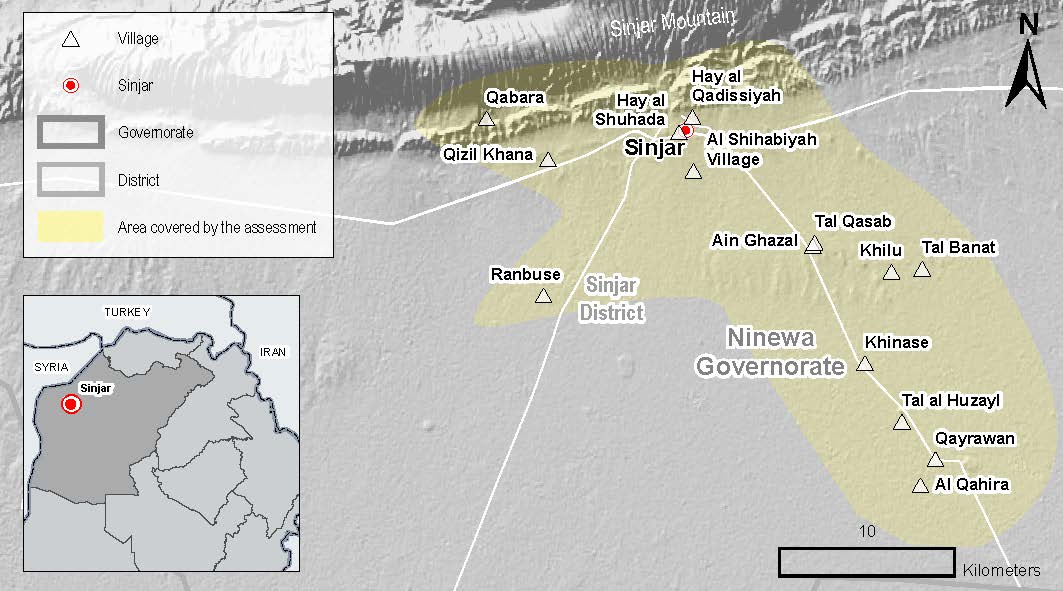
200,000 residents of Sinjar town and surrounding villages fled during ISIL rule. As of February 2018 approximately 6,000 families have returned. ©REACH/2018
Iraq has seen more than 3.5 million people return to their area of origin nationwide since the Government of Iraq announced victory over the so-called Islamic State of Iraq and the Levant (ISIL) in December 2017. To help inform programming that supports a durable and safe returns process, REACH, in partnership with the Returns Working Group, is conducting Rapid Overview of Areas of Return (ROAR) assessments in locations where there is a scarcity of publicly available up-to-date information. The ROAR provides insights on what motivates return, along with an overview of the current situation in each assessed area in regard to protection issues, livelihoods and the provision of basic services. The third ROAR focuses on Sinjar town and its surrounding villages. The first two ROAR assessments focused on Telafar and Ba’aj.
Sinjar, a town to the south of Sinjar Mountain in the west of Ninewa governorate, was held under ISIL rule from August 2014 to November 2015. During this time, approximately 200,000 residents, of which many Yazidi, fled from Sinjar town and surrounding villages. Members of the Yazidi community who stayed behind have been reported to have faced human rights abuses, including systematic killings, sexual enslavement and kidnapping. Returns to the area began in 2016 and by February 2018, an estimated 6,000 families had returned to Sinjar town.
REACH collected data on Sinjar between the 7th and 10th of May through 24 remote interviews with returnees, residents remaining in displacement, and key informants with knowledge on one or more of the thematic areas covered by the assessment.
According to REACH findings, the main reason given by returnee informants for coming back to Sinjar was a perceived improvement in safety and a desire to return to land and property. Those remaining in displacement highlighted that they did so because of the lack of sufficient services and safety concerns related to social tensions. Key informants representing the internally displaced and identifying as Muslim expressed unwillingness to return due to fear of reprisals from community members or local security actors in Sinjar.
Only basic medical services are reportedly available in Sinjar town. As a result, residents are forced to travel to Telafar, Mosul, Dahuk or Sinuni to access appropriate healthcare. Residents of Sinjar also need to travel to Mosul or Dahuk for obtaining or renewing legal documents. Furthermore, informants reported that the public network is not available to provide water, making residents dependent on trucked water. Schools have opened in Sinjar town, but with limited capacity and resources. This has led to a lack of school attendance from surrounding villages. Lastly, there are only a limited number of livelihood opportunities in the area and agricultural work remains restricted due to the fear of agricultural land containing explosive hazards.
REACH will continue to conduct assessments in areas of return in order to fill current knowledge gaps. The next ROAR assessment will focus on Ana town in the Anbar governorate.
For a more comprehensive overview of findings from the assessment, please visit the REACH Resource Centre and read the full Rapid Overview of Areas of Return (ROAR): Sinjar and Surrounding Areas report.


